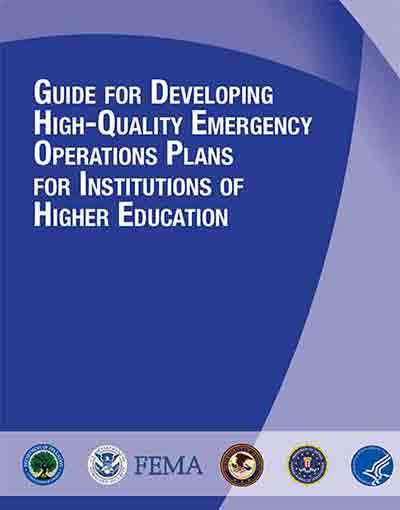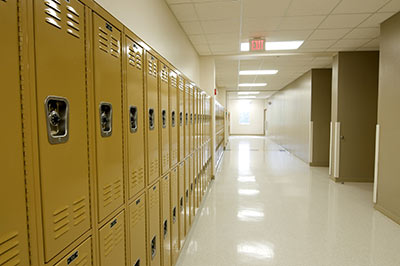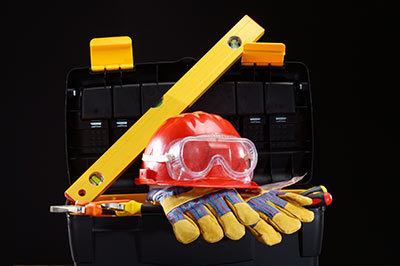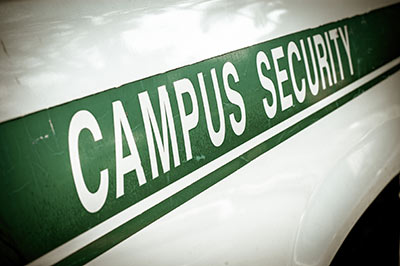Department of Homeland Security (DHS)/Federal Emergency Management Administration (FEMA), Department of Justice (DOJ)/Federal Bureau Investigation (FBI), United States Department of Education (USDOE), & Department Health and Human Services (DHHS), 2013. Our nation’s post secondary institutions are entrusted to provide a safe and healthy learning environment for students, faculty, and staff who live, work, and study on campus. Faced with emergencies ranging from active shooter situations to fires, tornadoes, floods, hurricanes, earthquakes, and pandemic influenza, this is no easy task. Many of these emergencies occur with little to no warning; therefore, it is critical for institutions of higher education (IHEs) to plan ahead to help ensure the safety and general welfare of all members of the campus community.
Tag: School Safety
U.S. EPAs National Radon Action Month
EPA, 2015. This January, as part of National Radon Action Month, U.S. EPA encourages you to test your school facilities for radon. A known human carcinogen, radon is one of the most hazardous indoor pollutants. It is the leading cause of lung cancer among non-smokers, causing almost 21,000 deaths a year. Radon is a naturally occurring radioactive gas that emanates from rock and soil and can enter school facilities through cracks and openings in building foundations. A nationwide survey of radon levels in schools estimates that nearly one in five has at least one schoolroom with a short-term radon level above the action level of 4 pCi/L (picocuries per liter) — the level at which EPA recommends that schools take action to reduce the level. The only way to determine if your school building has elevated radon levels is to test for it. Testing is simple and unobtrusive and every school should have a plan to manage radon. Winter is a good time to test for radon because cold weather and the heating season can elevate radon levels in a school. It is also easier to maintain proper testing conditions in the winter because doors and windows are closed except for normal entry and exit, which helps in determining the maximum radon level.
Repair for Success: An Analysis of the Need and Possibilities for a Federal Investment in PK-12 School Maintenance and Repair
21st Century School Fund, 2009. A new national commitment to address the deferred maintenance and renewal of our nations PK-12 public school buildings will improve our education system, the economy and the environment. A $27 billion investment, just 10% of the minimum estimated total need, would take us a major step closer to ensuring that the nearly 55 million staff and students who attend school daily are in healthy, safe and educationally appropriate environments. This investment will also quickly create between 160,000 and 235,000 jobs1 that will protect our environment and sustain the public infrastructure investments made by earlier generations.
Through a detailed analysis of what school districts have spent on maintenance, repair, and capital renewals, the 21st Century School Fund found that since 1995 the nation has not reduced its level of deferred maintenance. In fact nationally, using a conservative estimate and extremely modest standards, deferred maintenance in our PK-12 public school buildings has grown from $216 to $271 billion. This is an average of about $41 per square foot of space and about $5,400 per student. A more aggressive estimate pegs the total national deferred maintenance, repair and renewal needs of our public school buildings at $650 billion.
Reversing the Cycle of Deterioration in the Nation’s Public School Buildings
Council of the Great City Schools, 2014. The report describes how school districts, financially squeezed over long periods of time, made economic decisions that reduced the most cost-effective types of maintenance work: preventive and predictive maintenance. The result of those decisions “to save money” will, in the long term actually increase the amount and frequency of much more expensive breakdown repair and replacement work.
As funds continued to be inadequate, the higher costs of breakdown repair work are forcing districts to make fewer repairs, which accelerates the deterioration of buildings and component systems. Ultimately, districts experienced and will continue to experience premature failure of buildings and systems, and are forced to borrow large sums of capital funds (with their accompanying debt service costs) to upgrade and/or replace facilities. Sadly, new buildings are likely to receive the same lack of preventive and predictive maintenance, thereby repeating the cycle of deterioration.
The report contains contemporary references that link the conditions of school buildings to student achievement and a variety of other issues. It also provides information and references to a variety of strategies that have proven successful in reversing the cycle of deterioration.
School Crime and Discipline Handbook: A Practical Reference Guide
Office of Attorney General of Texas, 2010. This manual serves as a practical guide for parents, school employees and policy makers in the state of Texas on issues involving crime in the school system. This document elucidates the laws, duties, liabilities and procedures in responding to school-related crime in Texas.
Texas Emergency Management Toolkit
Texas School Safety Center, 2013.The Texas Education Code §37.108 states: "At least once every three years, each school district or public junior college district shall conduct a safety and security audit of the district's facilities. To the extent possible, a district shall follow safety and security audit procedures developed by the Texas School Safety Center or a comparable public or private entity". While the term "audit" is included in TEC §37.108, the process was developed as an ongoing assessment of a district’s safety and security. Audits should be an ongoing process with the aim of identifying hazards, threats, and vulnerabilities that might pose a danger to life or property and/or may interfere with a safe, secure and healthy environment that is conducive to teaching and learning. Attention to safety and security should not be thought of as an annual or a once-every three year "audit" event. Districts are encouraged to integrate ongoing safety and security assessments into everyday activities. This includes planning, training, and drilling of emergency procedures.
SECTION 1
Audit Reporting
SECTION 2
K-12 Safety and Security Audit Guide
SECTION 3
Higher Education Safety and Security Audit Guide
Texas School Safety Guide
Office of the Attorney General of Texas, 2007. Protecting our children from harm is more important today than ever before. This is especially true in school settings. Children must have a safe and positive learning environment in order to receive the education they deserve.
In recent years, tragic school shootings such as those at Virginia Tech University and Columbine High School in Colorado have focused the nation’s attention on the need for secure campuses. Here in Texas, we are committed to ensuring that schools are safe havens of learning for our children – free from violent tragedies and other behaviors that threaten students’ safety.
The Office of the Attorney General (OAG) is strongly committed to assisting local school administrators as they create and maintain a safe, positive learning environment for their students. To that end, we have joined with the Texas School Safety Center to offer several resources intended to foster school safety. The first of these resources is this School Safety Guide, a practical resource handbook from the OAG that covers the laws applicable to Texas public schools. This Guide can help provide direction to school officials in handling a variety of school safety and disciplinary problems.
Model School Safety Plan for Rhode Island
State of Rhode Island Emergency Management Agency, 2013. In July of 2013, Governor Chafee signed RIGL §16-21-24 into effect. The law requires RIEMA, in coordination with RIDE to develop a template for school districts to work with local police and fire departments to conduct a school safety assessment and create an emergency plan. School committees are now required on an annual basis to update school safety and emergency plans and procedures. By December 31st of each year, the Commissioner of Elementary and Secondary Education must present a safety assessment to the General Assembly and the Governor.
RIEMA, in collaboration with RIDE, the Department of Behavioral Healthcare, Developmental Disabilities, and Hospitals, the Rhode Island Department of Public Safety, Rhode Island State Police and the Division of the State Fire Marshal, and many other stakeholders developed the Model School Safety Plan in the wake of school incidents. The purpose of this joint initiative is to enhance preparedness and response procedures for school systems and local communities in the State of Rhode Island.
The plan is a 300-page strategic blueprint which incorporates best practices and state requirements into a guide that school districts can adopt or modify to meet their individual needs. The key documents in the new resource include an emergency planning guide and two FEMA publications regarding developing high-quality emergency operations for K-12 and Higher Educational institutions.
School Safety and Security Plans: Minimum Requirements
New Jersey Department of Education, 2011. The New Jersey Department of Education takes proactive measures to protect the safety and security of all our students and staff members. All school districts in New Jersey are required to have a school safety and security plan. Each plan must be designed locally with the help of law enforcement, emergency management, public health officials and all other key stakeholders. All plans must be reviewed and updated on an annual basis. These plans include procedures to respond to critical incidents ranging from bomb threats, fires and gas leaks, to an active shooter situation.
This document provides the required elements that must be included in every district’s school safety and security plan. The requirements are not a step-by-step guide for completing a comprehensive emergency response plan, but rather define the minimum elements that should be included in the plan, including the planning process.
Delaware: School Safety Procedures Guide
Delaware Emergency Management Agency (DEMA), 2007. This guide outlines recommended procedures for responding to emergencies. A copy of this guide should be placed in every office, receptionist area, cafeteria and other places where people gather. Since the information is general, each workplace or building should tailor procedures to fit its own environment and capabilities. A comprehensive crisis management plan may be developed from this guide. For the most effective use, present guide to staff during training and review procedures frequently.











